It was time for my usual weekly adventure with Dad, but we were growing sick of the slippery winter mud coating our usual out of the way tracks, so we opted to try something new. We picked up a copy of Paul Hayward’s More Intriguing Dunedin Street Walks and opened it up to the first foray contained therein, a wander around the hill suburb of Maryhill which promised exciting historic buildings and old tram car routes.
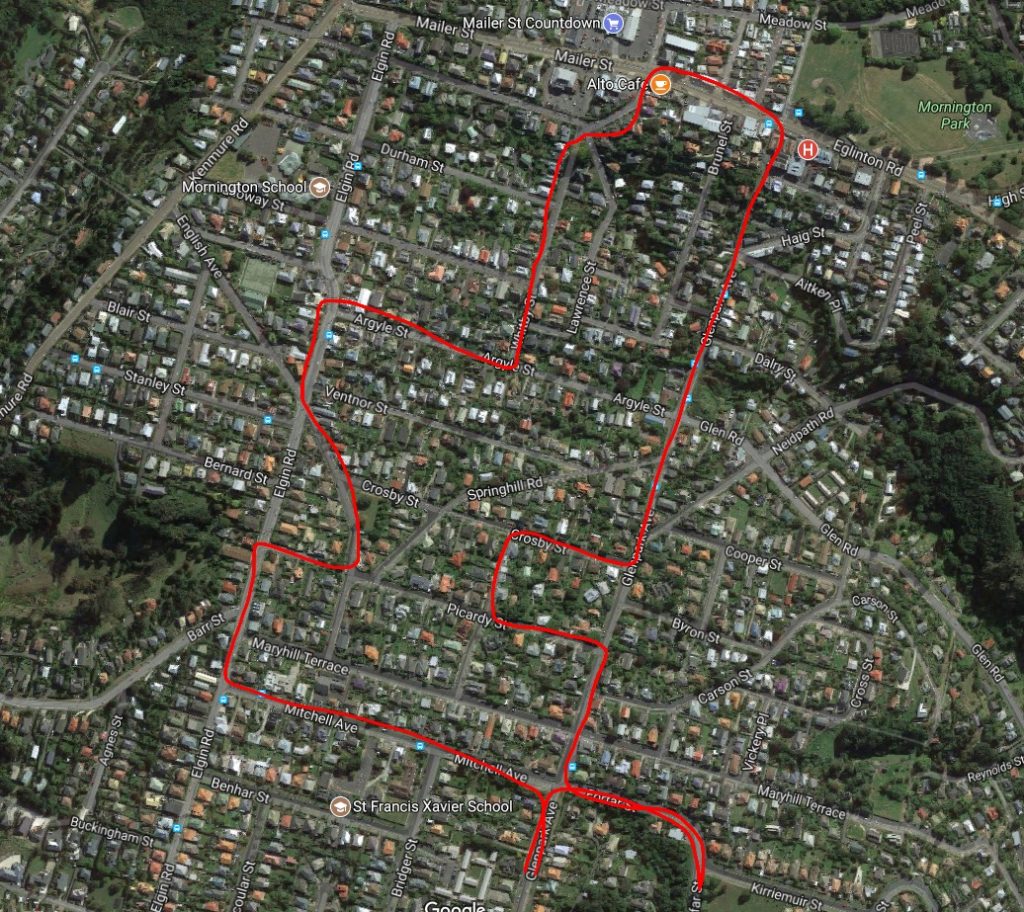
I recall this series being quite popular a decade or so ago, and this the second volume dates to 1998. I was interested (one could even say intrigued) to see what things might have changed in the 19 years since publication.
As directed by the little blue book, we parked on Glenpark Ave, outside the old house of legendary walker A.H. Reed himself!

If you’re a big reader then that name probably rings a bell, because Alfred Hamish Reed co-founded the publishing house of A.H. & A.W. Reed which produced a great deal of interesting New Zealand non-fiction. At the age of 85 he walked the length of New Zealand, giving both Dad and me a lofty example to live up to. This is the house he lived in until the death of his wife in 1939. Even then, he didn’t go far, taking up residence in the smaller house next door until his death at 99. He even jokingly referred to himself as “public transport enemy No. 1” due to his well-known aversion for taking the bus back up here from town.
Now we were instructed to head toward the Forfar St intersection and notified of an optional detour to view “Clyde Hill”, once the only house up here and I suppose the origin of the suburb name. Well we wouldn’t be very adventuresome if we didn’t take that up, so we ambled down the hill towards Kirriemuir Rd, but could not see past the wall of foliage in our way. Luckily there was a path that would take us through the trees to Oakwood Ave, and as we passed through the shade Dad regretted not bringing his tools to collect a soil sample, having presumed we would not find any opportunities in the suburbs.
Emerging on to the avenue we peered around for the “distinctive four chimneys”, and eventually located our target.
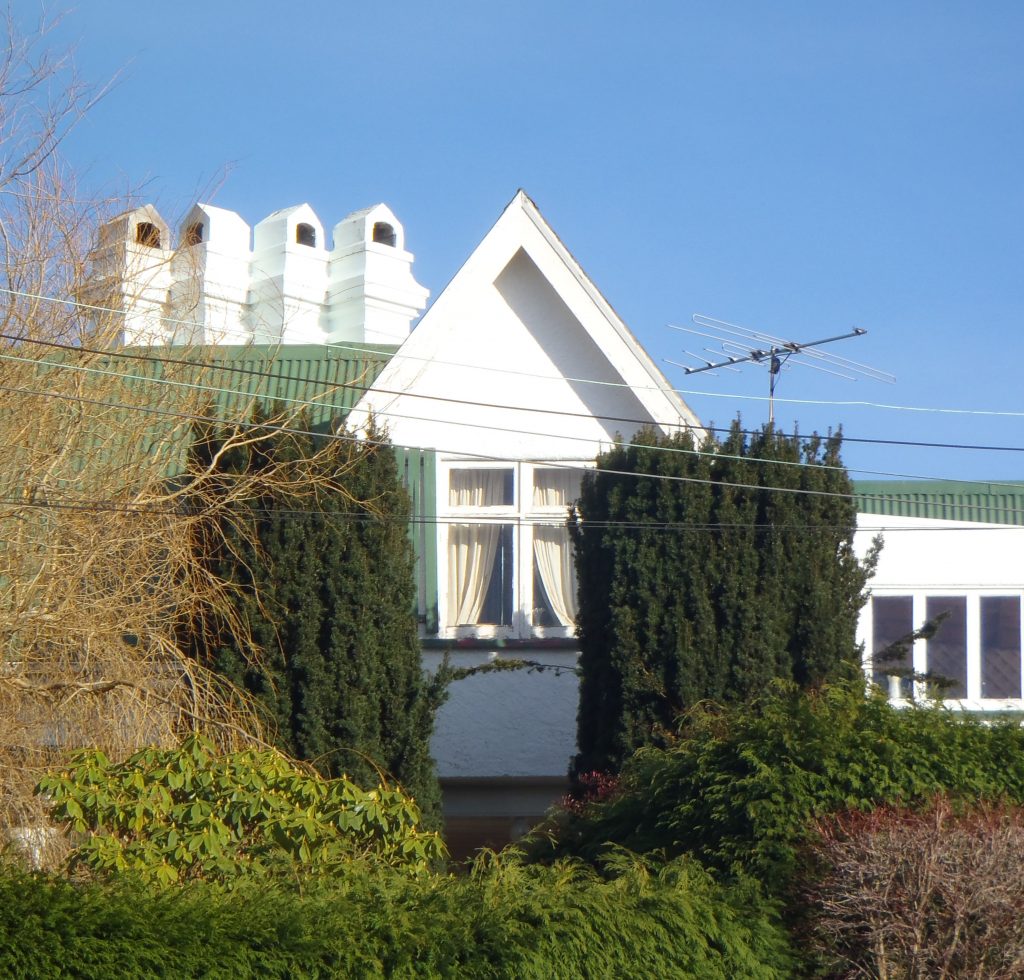
If it weren’t for the chimneys the house wouldn’t stand out at all amongst the other buildings clustered closely around it, and it was difficult to imagine it standing here alone. But indeed the 1901 map confirmed it and I managed to find a 1920 photograph to assist my imagination.

The City Council developed the land in the 1930s and built 70 houses here, rendering Clyde Hill just one among many.
Heading back to the Forfar St intersection, we took a break to meet a new friend.
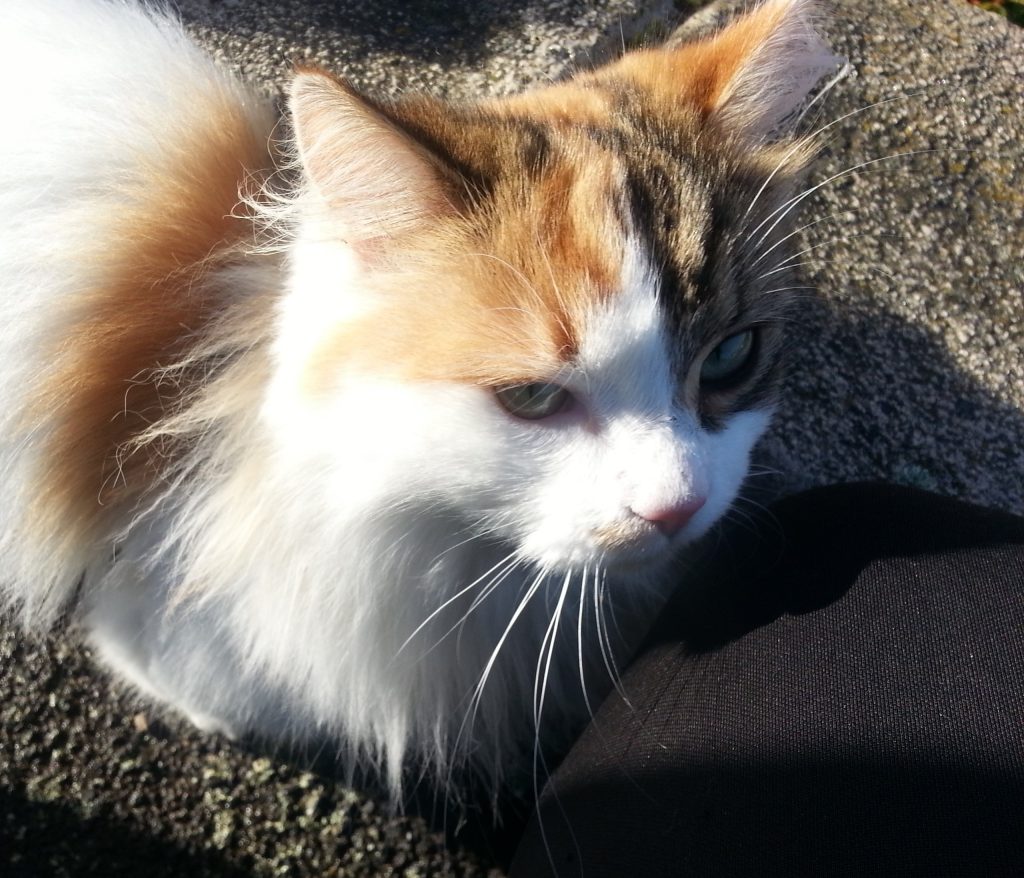
Back at the intersection, we gazed down Glenpark Ave at what we understood to be the 1885-1955 cable car route. Interesting that the street has the same lumpy aspect as High St, our most famous old cable car route. Was lumpiness a requirement of such routes, or is this only a coincidence because Dunedin is lumpy?

Then it was time to turn in to Picardy St, by the “Neighbourhood Support Area” sign, now so faded as to be illegible. From here we were supposed to turn to view the “magnificent” “best back view of any house in Dunedin”. Alas for our dear guide, all we could see were bushy back yards. Foiled, we carried on up Picardy St and at the corner of Lesney St, proceeded to “stop and stare!”

It turns out our stares were directed at two Edwardian villas, one dating from the 1880s. After duly admiring the buildings, we headed off down Lesney St and then turned into Crosby St to encounter the “totally unexpected!”
Much like Shakespeare’s plays, the Intriguing Street Walks don’t read well from your living room. But when experiencing them in action, the breathless italics and exclamations and prompts to stop and stare are great fun to play along with. Here, we did manage to locate our unexpected vision, perhaps the largest private brick retaining wall in Dunedin. Whilst there is a tunnel, I am certain it is no traboule!
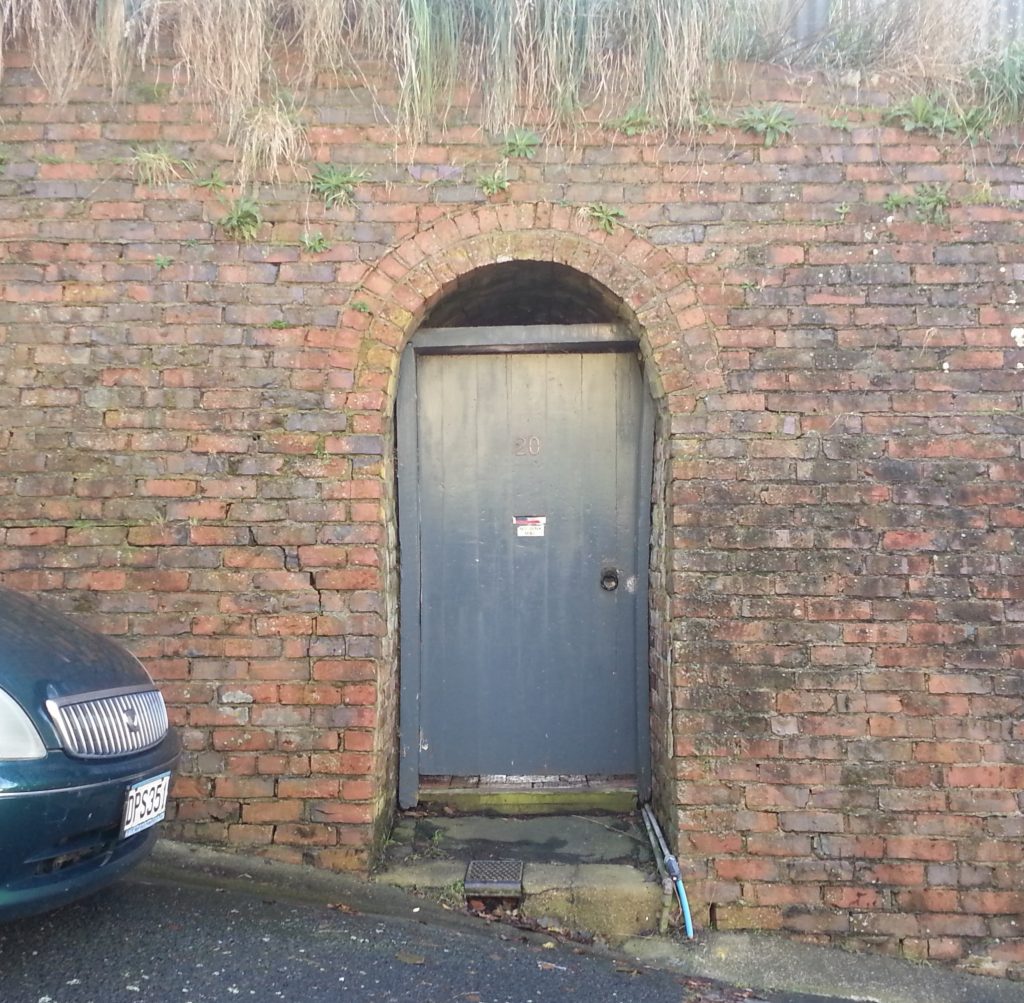
Back on Glenpark Ave we continued down the hill, to the well-muralled Scout Hall that occupies the old site of the Mornington Borough Council Chambers. Tucked in behind is the former Church of Christ, whose congregation donated 25 shillings to the Titanic Fund in 1912 after the famous disaster. Even our pokey little corner of the world wasn’t immune from the shock that event sent around the world.
Paul describes the building as “rather rundown”, though the scaffold that currently encases it suggests that it may soon emerge in greater glory.
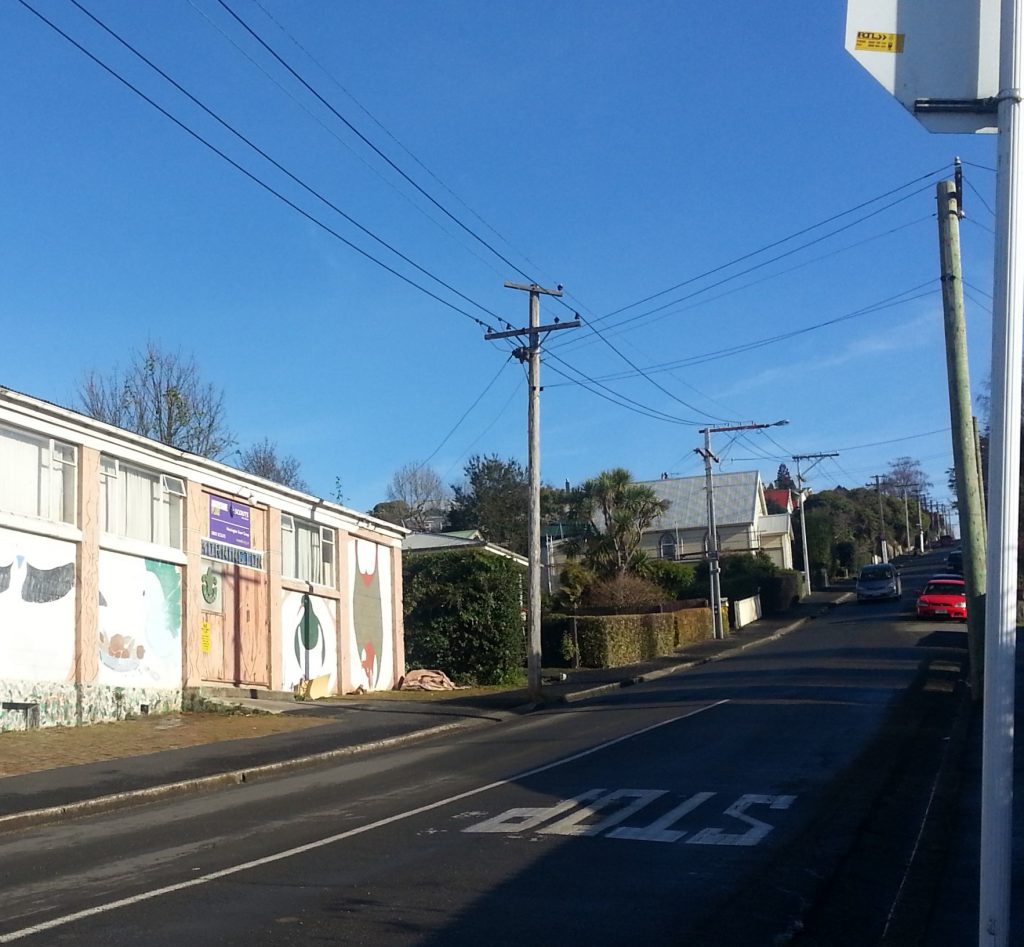
Moving on we found another obsolete church, the 1881 Presbyterian Church, built by Robert Lawson of First Church and Seacliff fame. Thankfully this building happens to be on stable ground, and so still exists!
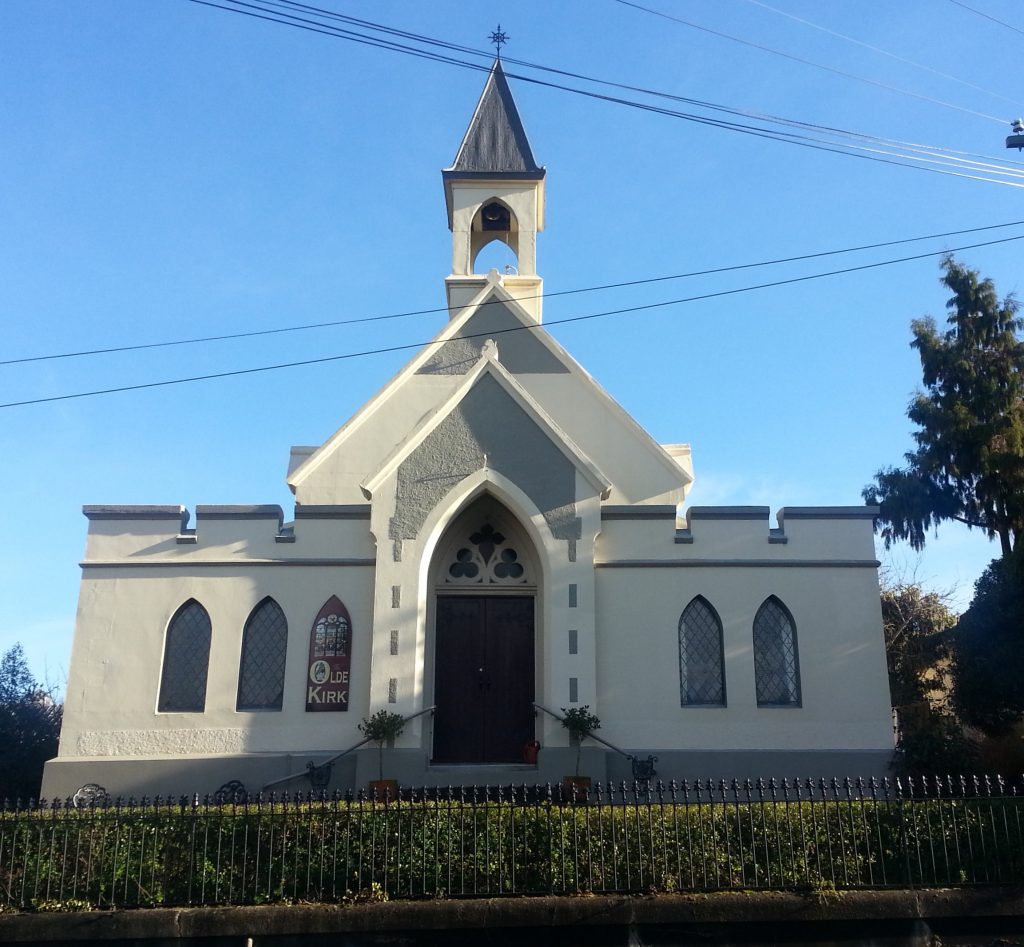
We now continued to the end of the road, where our attention was called to a strangely-shaped green building. This was once the Temperance Hall and also did some time a an roller skating rink starting in 1888 – you can’t tell me the Victorians didn’t know how to have some good clean fun!

Then we charged on straight ahead up the steep staircase, once the first shuddering drop for cable car passengers starting off from the shed above and heading for Mitchell Ave.
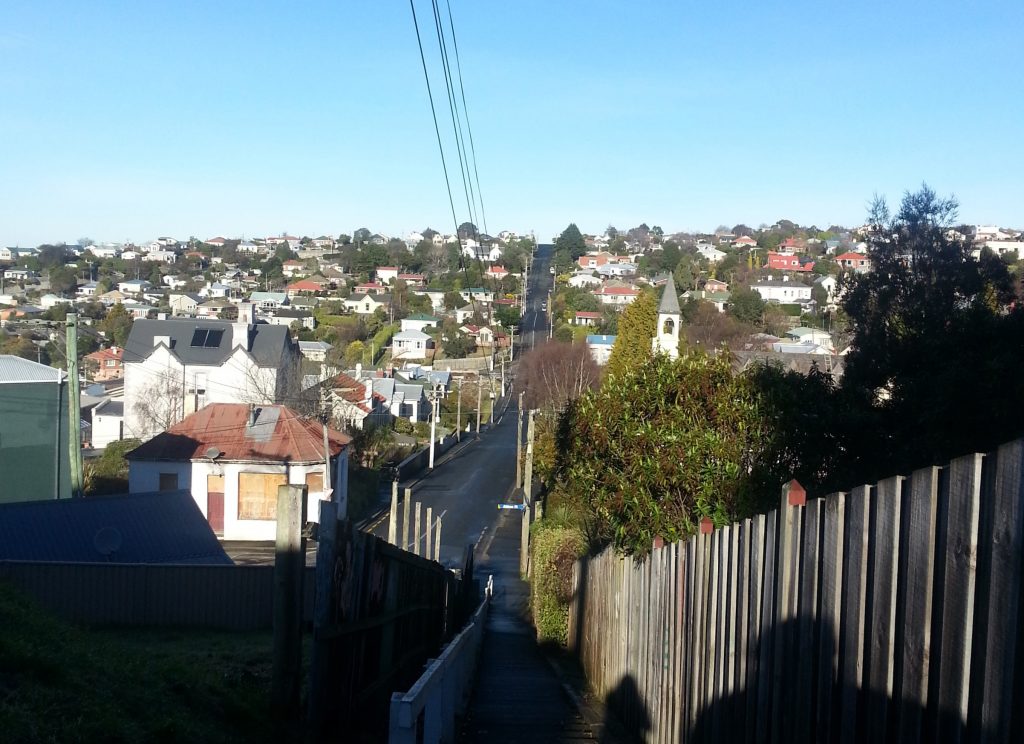
Finally we made it to the summit, where the old cable car shed now appears to be a set of flats or industrial building. Then we emerged into the small Eglington Rd shopping district, near the old terminus for the aforementioned High St cable car. The blue book suggests stopping here for an ice cream, and who were we to argue? Ice creams in hand, we turned up the street, passing the old post office.
As directed, we looked about for a house with a turret and soon located the grand “Vernard” manor house on the hill above. Built in 1898 for William Alexander Moore, the striking mansion is also famed as the place polar explorer Robert Falcon Scott stopped for the night on his last day in New Zealand before departing on his ill-fated Antarctic journey. Here Scott and his wife were treated to dinner and a ball in their honour, one last fling before parting for the last time.

Now we were to follow another cable car route, a troublesome and short-lived one that ran only from 1906 until 1910. During that time it broke down numerous times, perhaps due to the amount of corners on its tortuous route to Mitchell Ave. We turned off into Lawrence St only to discover something I’d seen a few times in England but never before in New Zealand. Intrigued? Behold…a lichgate, the traditional shelter for mourners as they await entry to the church.

This monument was erected to honour the memory of the four McFarlane sons who were killed in WWII. These four young men of Dunedin extraction now lie in Napier, Germany, Egypt and New Caledonia, never to be reunited. Most certainly worthy of remembrance as we pass by.
Here we deviated from the route of Dunedin’s worst cable car, turning on to Whitby St while it would have carried on up Havelock St. We made the recommended detour up Durham St to peek at the first St Mary’s Vicarage and the former church hall next door, with conspicuous bracing against one of its walls testifying to a 1931 wind storm.
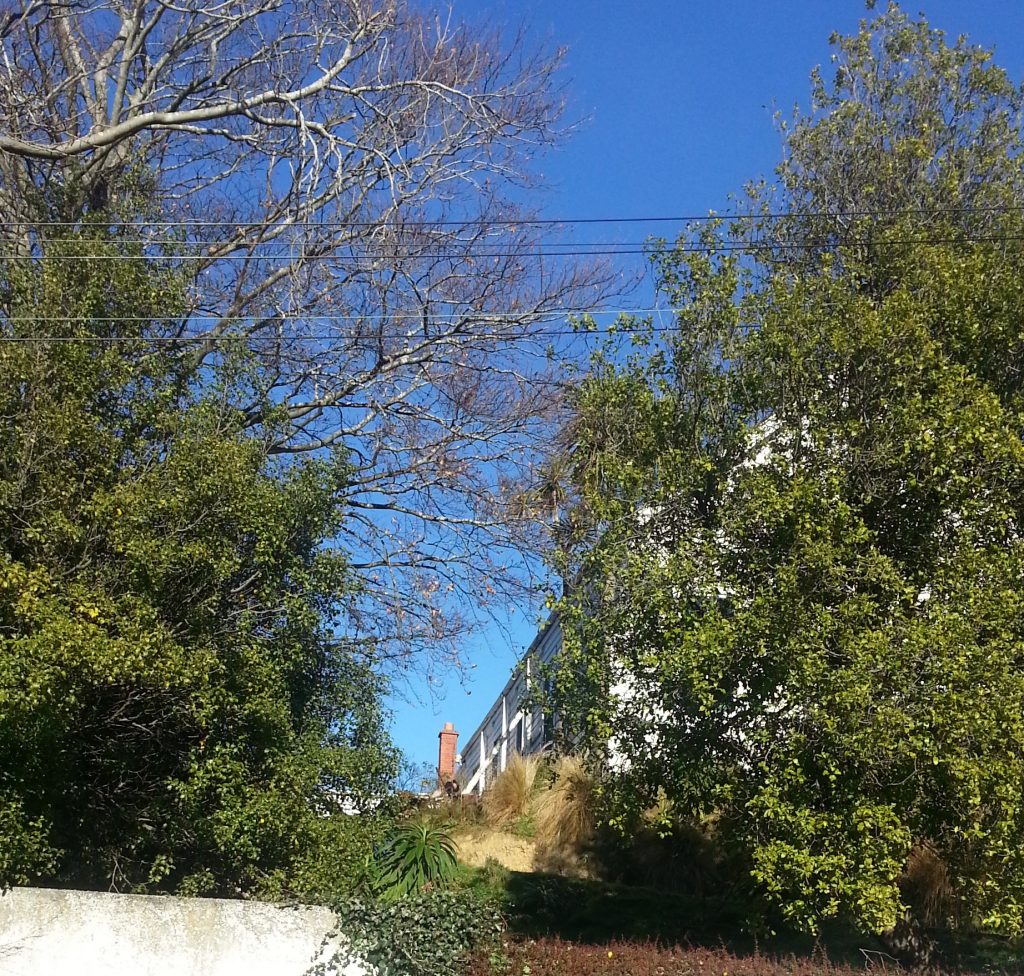
Then we headed back down to Whitby St before another detour to check out 1930 Methodist Hall on Galloway St. Next door on Whitby St again, we were supposed to “blink twice” at the sign – but alas that surprising sign seems to have fallen prey to the ravages of time, as we could see no such thing.
Heading up Argyle St toward Elgin Rd, I was pleased to finally find something I could add to Paul’s tour of the area, because on our way we passed by a mysterious unmarked building with cell tower behind. This is the Mornginton Exchange, which provides landline connections for residents in the area.

We’d barely set foot in Elgin Rd before leaving it again for English Ave, where we were treated to a decent harbour view before swerving back up the steps to Crewe St to find ourselves once again on Elgin Rd.

Now on the last leg of our mission, we found Mitchell Ave where the ill-starred Elgin Rd cable car line once terminated. We headed down this road back toward the first cable car route we’d encountered. While all evidence of these once-popular conveniences has been scrubbed from the landscape, we did discover a remarkable kowhai tree on the corner.

Surely this hefty example of an iconic native must be fairly old? Perhaps it dates back to the early days of Maryhill, when only a smattering of stately houses decorated the land.
That would turn out to be our final mystery as we were directed back to our vehicle. Our guided tour of this unassuming Dunedin suburb had revealed how much of history is lurking behind even the most normal of neighbourhoods. In addition to the old tram routes, we’d found connections to the Titanic, the Second World War, Antarctic exploration, and roller skating.
What secrets does your neighbourhood hide?
References:
More Intriguing Dunedin Street Walks by Paul Hayward
From North Cape to Bluff by A. H. Reed
THE TITANIC FUND. Evening Star, Issue 14856, 22 April 1912
Family brings French flavour to Mornington landmark by Kim Dungey
THE TERRA NOVA. Star, Issue 10014, 28 November 1910
Francis Maurice McFarlane Unknown date of birth – Died 15 June 1940
Laurence Herbert McFarlane Unknown date of birth – Died 1 July 1940
Donald Forrester McFarlane Unknown date of birth – Died 3 December 1941
John Osbourne McFarlane Unknown date of birth – Died 17 December 1943
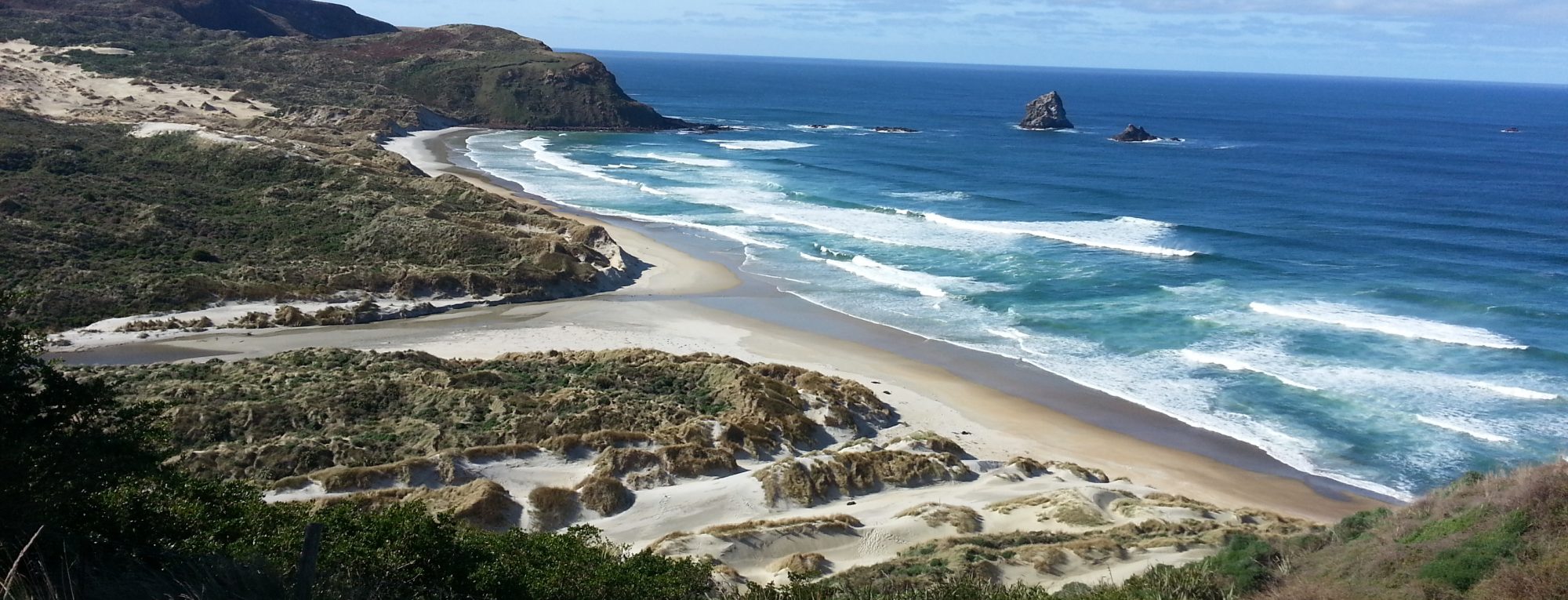

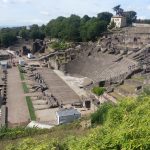
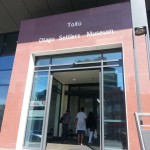
Just goes to show you really don’t know everything about your neighbourhood …Good one Amanda
Familiar sites – my backyard 1967 to 1983. I met A H Reed. He lived around the corner from us.
This is the area I live in, and have lived in for forty years. Very familiar! Great photos.
We live in lovely Maryhill. It is wonderful to read more of its fascinating history. Thank you for your historical detective work and for sharing what you discover.
I lived in forfar st Mr Read would often walk past while we were playing in the street and strike up a conversation and give us religious cards he carried in his bag he he was lovely friendly calm man.